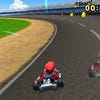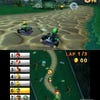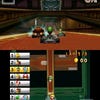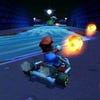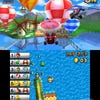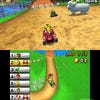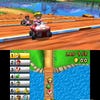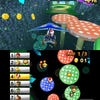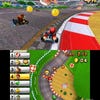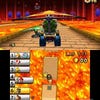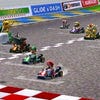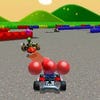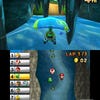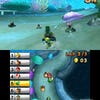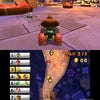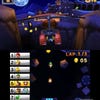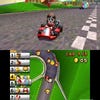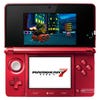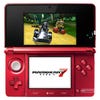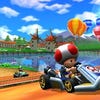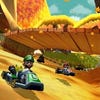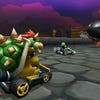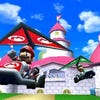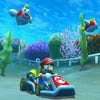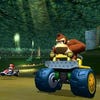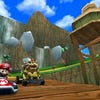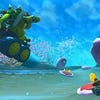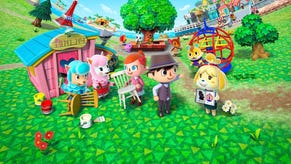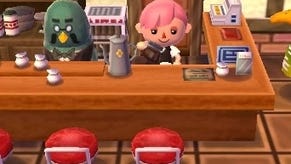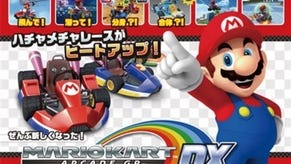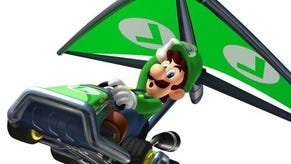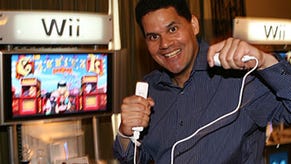Mario Kart 7 Review
Toad rage.
Why 7? There was never a Mario Kart 6 or a 5 or even a 2. Chronologically, of course, sequel has followed sequel with that dependable Nintendo plod. But the company has always chosen to brand each game as a discrete entity, never a numbered notch on an implied arc of evolution.
Super Mario Kart, Mario Kart 64, Mario Kart DS, Mario Kart Wii: all games tethered to and defined by their hardware. So why not Mario Kart 3DS, then? Perhaps Nintendo is no longer trying to pretend that it's reinventing a formula that it perfected long ago - or perhaps, as Shigeru Miyamoto suggested, it's just because 7 is a lucky number.
Whatever the reason, Mario Kart 7 proclaims to be a sequential advance in a series that has always struggled to evolve from the masterful blueprint laid down by its Super Nintendo debut. In fact, in structural terms, little has changed since August 1992.
True to recent form, Mario Kart 7 offers 16 new courses and a further 16 classic courses, cherry-picked from the series' now rich heritage. We are back to just eight characters to choose between initially; while Balloon Fight and Coin Collecting mini-games prop up the eight Grand Prix cups, this is a game that is largely short on extras.
There are, however, a number of tweaks and additions to the core, some welcome, others contentious. Now you are able to custom-build your kart before each championship, choosing the body, the wheels and, finally, a set of 'wings' used to glide back to the ground from special propulsion ramps. Each option offers different benefits and drawbacks, asking you to sacrifice top speed for acceleration, for example, or trade handling for heft. The flexibility is an improvement over previous games' rather straight options, allowing for a far greater number of permutations of vehicle, and it's one area where Nintendo has expanded scope in a meaningful way.
The coin-collecting concern of the original game also makes an unusual return. Mario's loose change litters the tracks and can be collected in order to unlock new kart bodies and add-ons. Simplicity is the watchword for Nintendo EAD, however, and there's no shop to speak of. Rather, you unlock a new, pre-set item every time you collect 50 coins.
It's a suitable if basic system that adds a secondary objective to each race beyond simply winning - although the decision to cap the number of coins that can be collected to just 10 per stage in order to artificially control the rate at which you unlock new items is an uncharacteristically weak one.
With the first game in the series, Nintendo not only imported the key characters from the Mario universe into a racing game, but also the very essence of his world. That's still true in Mario Kart 7; pea-green hills undulate under mellow yellow skies, while the game's all-new power-ups (the Fire Flower, the Super Leaf, the Lucky 7 and the Tanooki Tail, which allows you to swipe at enemies when they come too close) are all plucked from Miyamoto's various Mario myths.
But the pool of creative influence has opened up to include other Nintendo properties, too. Wii Sports Resort's Wuhu Island makes more than one appearance as a new track in the game, while the Pilotwings hang-gliders provide the most striking addition to the formula.
Launch your character from a special ramp and they'll glide down, allowing you to either pull back in order to gain height and fly over opponents and obstacles, or push forward to gather speed in a dramatic swoop. The mechanic introduces true verticality to the series, as well as a new strategic layer: sometimes it's best to drop from the sky as quickly as possible, while elsewhere gliding above the pack is preferable. Nintendo has even gone back to retrofit many of the 16 classic tracks with glider ramps, showing its unflinching belief in the addition - one only the staunchest traditionalist will reject.
The new tracks are generally great, largely based around various Mario characters (Toad Circuit, Daisy Hills, Shy Guy Bazaar, Koopa City). Most of these exhibit the innate understanding of circuit design seen in the best titles in the series, but a few feel sloppy and unfocused.
Wario's Galleon sends rivals tearing around a decrepit castle docks before jumping onto a pirate ship, dodging bullets Bills, weaving around popping potholes and gliding from mast to parapet. Melody Motorway has the karts tinkling along the keys of a piano, delicate melodies poking out from under the sound of growling exhausts. The decision to introduce underwater sections in which your kart dramatically slows is a poor one, however, and stages that revolve around these sections, such as Cheep Cheep Cape, are low points.
Meanwhile, the 16 classic maps have been well chosen, mixing stalwarts such as the SNES' Mario Circuit 2 and Rainbow Road with more recent additions, such as the Wii's autumnal Maple Treeway and Coconut Mall, and the DS' Airship Fortress.
All sets of Cups are available in three different engine classes (50cc, 100cc and 150cc) and for players who manage to gold-star every course in the game by placing first in each race, Time Trials offer a chance to compete beyond mere placing. Local and Online multiplayer follow the template set out by the Mario Kart Wii. It's a dependable structure with an exciting addition tailored for 3DS: the ability to download ghosts to race against via Streetpass and Spotpass as you roam around.
Races themselves are as surprising as ever. While most game designers work hard to eliminate the random, Nintendo EAD treasures capriciousness. Power-ups are weighted to favour the weaker player, shunting those in last place to pole position in the blink of an eye, leading to a moment-by-moment churn in placings that makes the game at once infuriating and deliciously compelling.
At 50cc, a player with only a small degree of competency will routinely occupy a lonely first place, far ahead of the jostling pack. But played at 150cc or online, that fine balance between exasperation and glory can be keenly felt, the game asking you to tip the balance in your favour through skill while never offering the chance for true domination.
Mario Kart is a classic formula, so often aped and never bettered. It's in the physics of the various karts, which influence collisions and handling; the boost start, for players who hit the throttle at the perfect moment during the timer countdown; the tiny hop allowing you to skid into corers; the clutch of items so finely balanced between offensive and defensive. It's the inscrutable concoction of genius.
Nintendo knows that to mess with the recipe is to risk losing the magic, a lesson learned in Double Dash's shift of focus away from taut racing to whimsy. So while the gliding and new power-ups may seem like bold moves, in practical terms they are conservative additions, precision-slotted into a cast-iron framework.
The 3D is a treat, benefiting from the technology's more comfortable application in games that travel into the screen rather than across it. Likewise, Mario Kart 7 is a handheld technical marvel, going toe-to-toe with the Wii title for graphical vibrancy, texture and detail.
Above all, there's a constant focus on the series' fundamental strengths: narrower courses and a lower number of on-track competitors place renewed importance on precision racing. Meanwhile, the glider, rebalanced power-ups and exuberant new tracks filled with short cuts and secrets ensure that the light-hearted side to the series is maintained. The additions that are here may look significant, but in reality they are sympathetic, while the subtractions from recent games move the game back to its glory days.
"The core of Mario Kart is pretty solid at this point and I think it's safe to have it evolve in a pretty staid and traditional manner," Miyamoto said recently. Mario Kart 7 reflects that, in its title and in its design: it's robust, but it lacks some creative effort on Nintendo's part. Newcomers will love it, while series stalwarts will find its novelties welcome, if largely inconsequential. But it's nevertheless one of the stronger entries in the series, balancing the orthodox precision of the original with the playful silliness of the more recent iterations more successfully than ever.
Conservative: yes. Enduring: absolutely. A Mario Kart 8, then.


